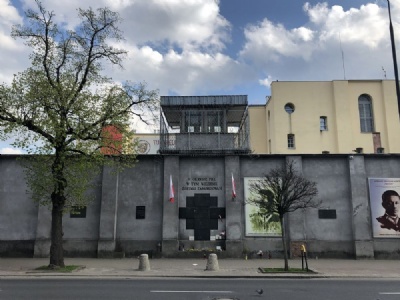Mokotów Prison
In a part of Warsaw called Mokotow there is a prison built by Tsar-Russia in the early 1900s (when Poland was part of the Russian tsarist empire). Until Poland was resurrected as a nation in 1918, it was first used by the Russians and after 1918 until 1939 used by the poles. After the Germans occupied Poland in September, 1939, it became one of several prisons the germans established in Warsaw. Those who were imprisoned were all seen by the Nazis as potential enemies. Abuse, torture and executions were part of the prisoners’ everyday lives. Some of the prisoners were sent to other prisons or concentration camps in occupied Europe.
During the Warsaw uprising in 1944, the prison was attacked by the Polish home army and about 300 prisoners were able to escape. However, the SS repelled the attack and in retaliation killed about 500 prisoners. The prison survived the war without major damages and came to house several Nazis who were awaiting trial or execution for crimes committed on Polish territory. For example, Jürgen Stroop, who chrushed the Jewish uprising in the Warsaw ghetto in April and May 1943, was hanged in the prison, March 1952. The Nazi governor of Danzig-West Prussia, Albert Forster, was also hanged in prison same year for crimes against the Polish people.
Current status: Preserved with museum (2022).
Location: 52°12'28.91"N 21°00'39.34"E
Get there: Tram.
Follow up in books: Höhne, Heinz: The Order of the Death’s Head: The story of Hitler’s SS (1969).


The prison is still in use but I think there is a small museum on the premises focusing on the time between 1944 and 1989. On the wall and outside of the prison are several memorials.